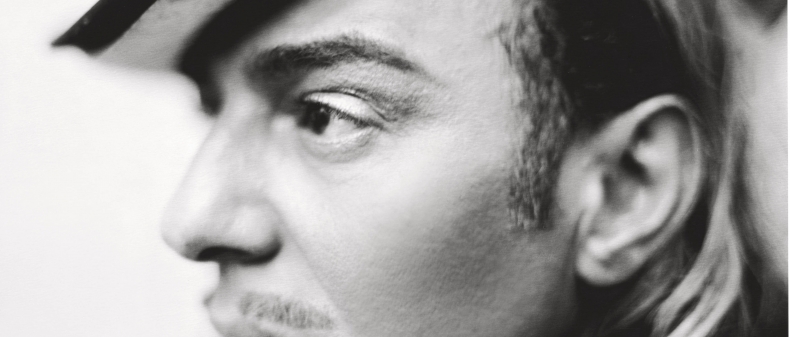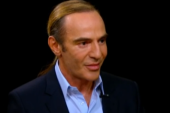
“There are no second acts to American lives,” F. Scott Fitzgerald wrote in his unfinished novel The Last Tycoon. While American lives may not have second acts, that line certainly did as writers throughout the years have misquoted it, taken it out of context, and flipped its meaning. (Fitzgerald scholars argue the author actually meant to imply the opposite opinion.) But the quote proved a too perfect description of the glittering promise of Scott and his wife Zelda, snuffed out by alcoholism, mental illness, and tragedy.
In the years since, writers quoted the line mostly to illustrate its inherent falseness. As opposed to the long shadows of Europe, Americans celebrate the promise of a fresh slate and new beginning. Who doesn’t love a comeback? Pick any example you like.This year Anthony Weiner, the former congressman known for sending lewd pictures to women on the internet, is running for mayor of New York– and he might actually win.
That’s all well and good for Americans, but what of Gibraltar-born, British-bred fashion designers? Since his anti-Semitic rants in Paris three years ago, many of the fashion industry’s heavy hitters have rooted for a John Galliano revival. In the years since, Galliano has tried to make amends with the Jewish community, meeting with leaders and studying the Holocaust.
“Fashion is ripe for comebacks,” wrote Amy Odell. “This is an industry that just loves to scoop up a fallen star or shattered soul.” The industry has long coddled models caught with drugs and made excuses for sensitive designers. Like rock music, fashion romanticizes the ‘hot mess’ in danger of veering out of control. Karl Lagerfeld even staged a show inspired by Amy Winehouse’s off-kilter beehive. If the industry can forgive, even normalize, addiction and drug use, what’s the hold up for Galliano Act Two?
“Rather than come out in a cover story, People magazine—style, to explain what happened and how everything’s different now, all we’ve gotten are official statements of apology here and there,” Odell explained. “We need something bigger –a good 60 Minutes segment, or at least an interview in Vogue…We need to see a glimmer of his humanity and normalcy.” Galliano’s inability to speak extensively about what happened may have cost him his gig as a lecturer at Parsons.
He may be late in accepting Odell’s suggestion, but he’s doing so now in typical Galliano, larger-than-life fashion. People Magazine? Please. For his first major interview, the designer spoke to Ingrid Sischy for Vanity Fair. (Epic photos by Annie Leibovitz, naturally.) Even before the July issue hits newsstands, Vanity Fair has released enough tidbits from the interview to change the scandal’s narrative. Increasingly Galliano’s declaration “I love Hitler” seems not like an outburst of long-repressed anti-Semitism and more a terrible result of a battle with drug and alcohol addiction.
“It’s the worst thing I have said in my life, but I didn’t mean it,” he told Sischy. “I have been trying to find out why that anger was directed at this race. I now realize I was so fucking angry and so discontent with myself that I just said the most spiteful thing I could.”
The designer claimed he slipped into drinking and pill popping as a means of celebrating and unwinding after a show. With each new collection came mounting pressures, but Galliano thought he could keep his partying in check, despite downing whole bottles of Vodka. “…I never for one second would admit I was an alcoholic,” he said. “I thought I could control it.”
His bosses at the luxury conglomerate LVMH that owns Dior attempted to intervene. CEO Sidney Toledano took Galliano out to lunch and told him to get help if he wanted to be healthy. Galliano told him he should take his own advice and eat better. Chairman Bernard Arnault told the designer he’d have to quit drinking or he would die. Galliano ripped off his shirt and declared, “Does this look like the body of an alcoholic to you?”
Taken together, Galliano stood accused of three outbursts of anti-Semitism, although he claims to not fully remember them. “When everyone came over to tell me that I had done these terrible things, I was walking round and round and round not really knowing what had gone down. My assistant told me about the video. When I saw it, I threw up…I was paralyzed from the fear.” As devastating as the incident and its aftermath was, perhaps it was the push he needed to finally take control of his problem. Galliano would hardly be the first addict who needed to hit rock bottom before he could adequately address his illness.
In addition to Arnault and Toledano’s failed interventions, Sischy’s story offers poignant anecdotes about those who supported Galliano after his fall from grace. Linda Evangelista was the only person to visit him at his rehab facility in Arizona, and Kate Moss tapped him to design her wedding dress. (Symbolically, the gown featured sequined phoenixes rising from the ashes.)
We’ll know more when the issue comes out, but my question right now is exactly how many industry colleagues knew about Galliano’s problems and did nothing to stop them? When does supporting a friend cross over into enabling an addiction? Some of the insiders Sischy interviewed said they wanted to intervene but “in the end no one wanted to betray the designer, and that after a drinking binge, he’d seem fine again.” Galliano himself paints a picture of a cocoon-like inner circle that provided him with bottles of booze among other drugs, a disaster scenario for someone with addictions. “I lived in a bubble. I would be backstage and there would be a queue of five people to help me. One person would have a cigarette for me. The next person would have the lighter. I did not know how to use the ATM”
None of which is an excuse for his behaviour. We all must take responsibility for our actions, and, as I’ve written before, I have real trouble forgiving my formerly favourite designer for indulging in such hateful language. It’s fair to say that an industry that rewards extreme expectations with truckloads of money is fertile ground for addiction. In the rush of some to help Galliano out now, is there an aspect of guilt?
And then there’s us, the fashion followers. I’ve heard a friend, half-jokingly, claim that Marc Jacobs hasn’t designed fun clothes since he stopped doing drugs. Will sober Galliano prove milder and more sedate? Will there be nostalgia for the ‘old Galliano’, even though we know he was sick? Call me a stick in the mud, but I prefer a healthy designer to an outrageous one.
____
Max Mosher writes about style for Toronto Standard. You can follow him on Twitter at @max_mosher_.
For more, follow us on Twitter @TorontoStandard or subscribe to our newsletter.














